A press release is a short, written, or recorded persuasive official announcement conveyed to target media members by a company’s public relations officer to announce a product or inform about new circumstances. It is a letter of one to two pages or approximately 500 words in length.
It collects all the important facts of a company’s story into a single source and sends them to journalists and media outlets. It provides the company with valuable media exposure, allows them to shape the information in public about their products, and to achieve their goals.
It is a primary source of information (i.e., the original source of data) written by technical professionals, professional journalists, an efficient member of a company’s public relations and/or marketing department, or a release writing company in an AP style format.
It is useful to garner attention effectively, create publicity and honorably position the company. In addition, it fosters brand identity and awareness, which generates leads and increases sales.
It also goes by some of the other following names:
- Press statement
- News release
- Media release
- Communiqué
- Information sheet
- News bulletin
Templates
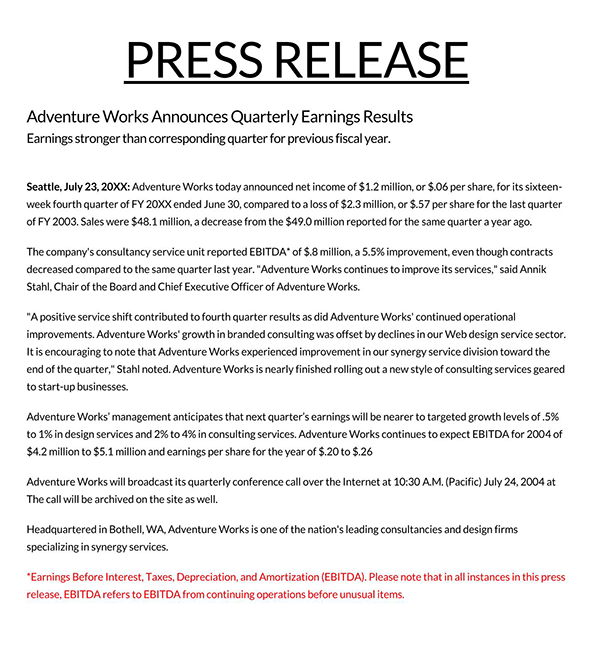
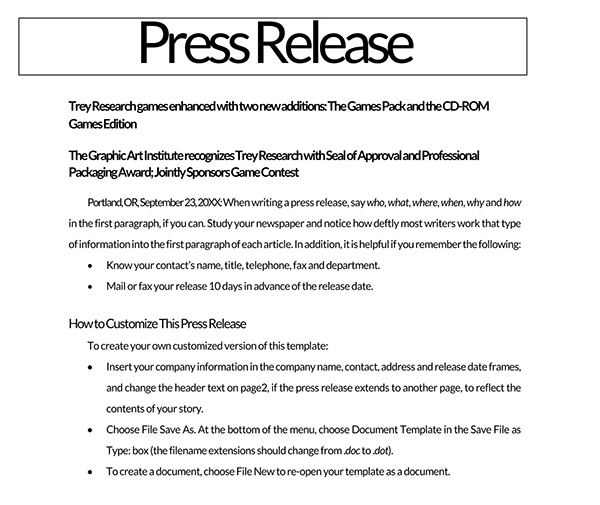
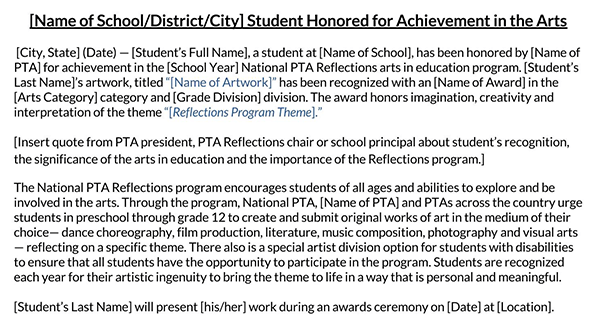
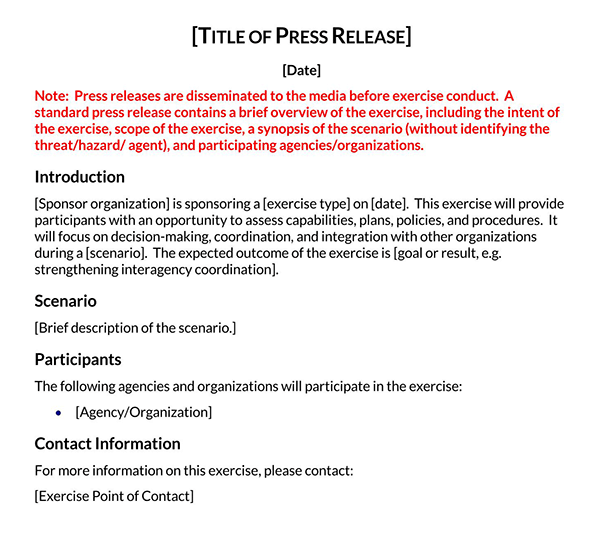
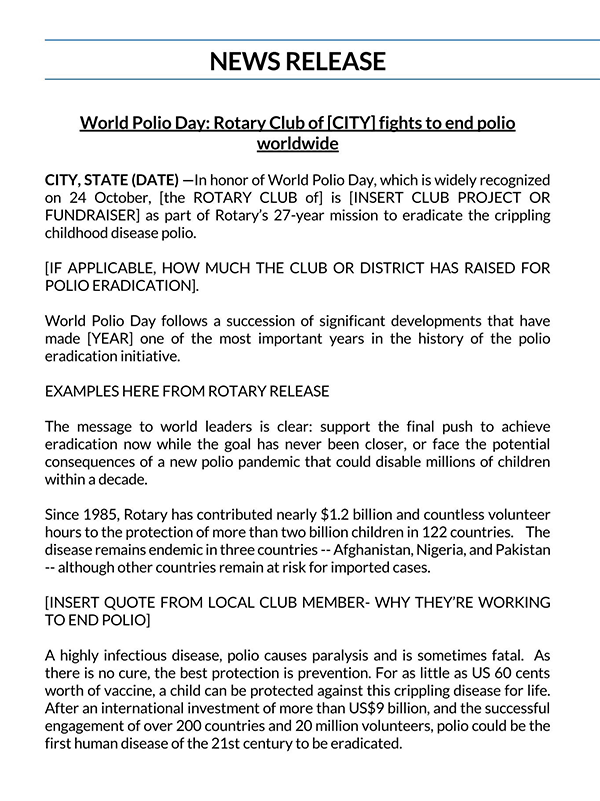
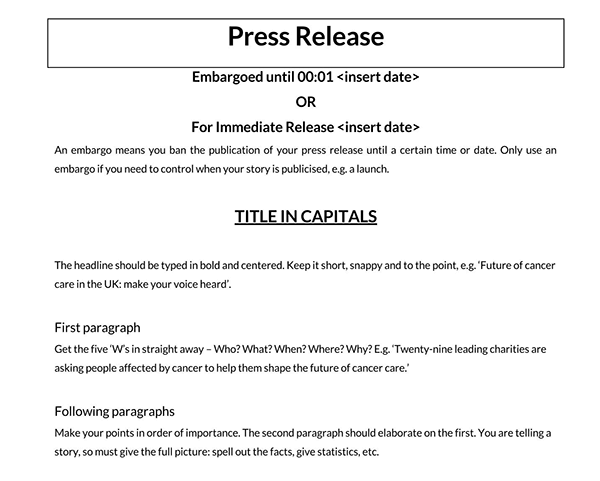
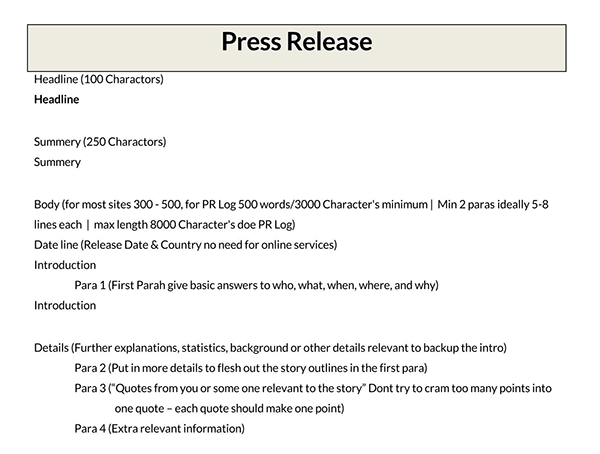
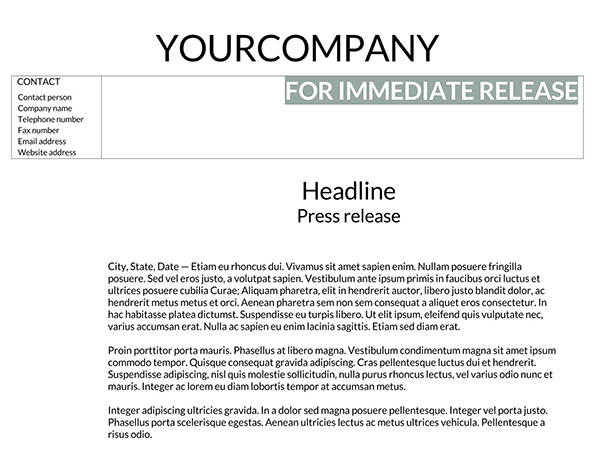
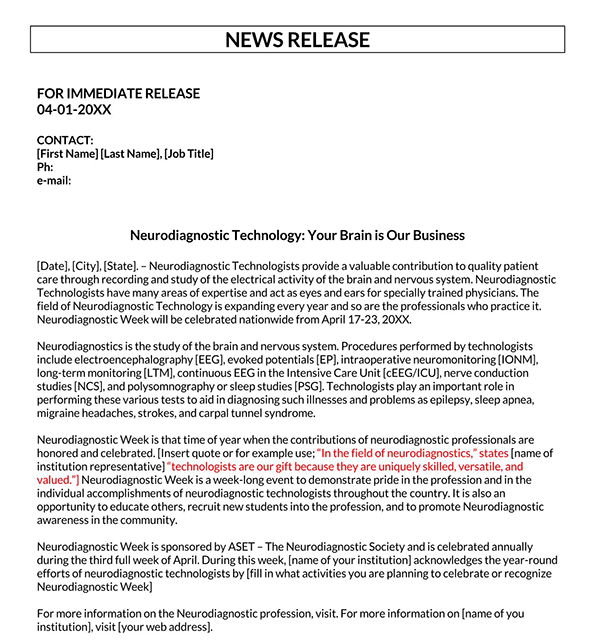
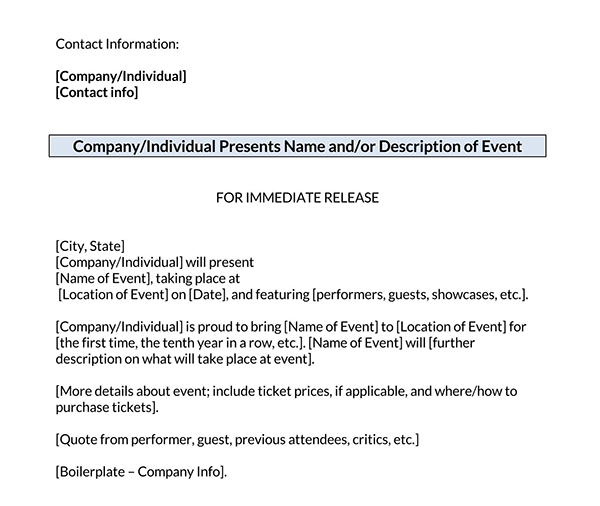
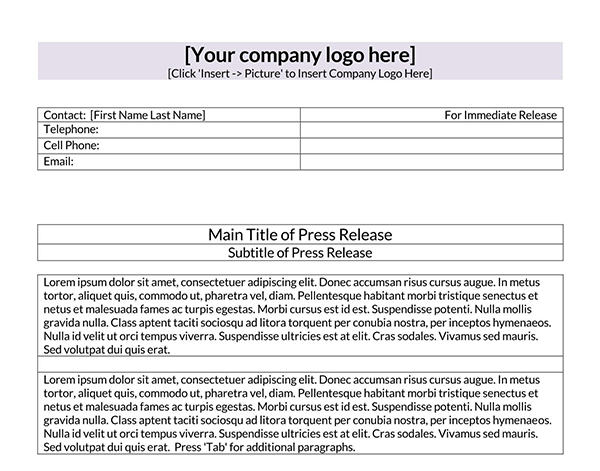
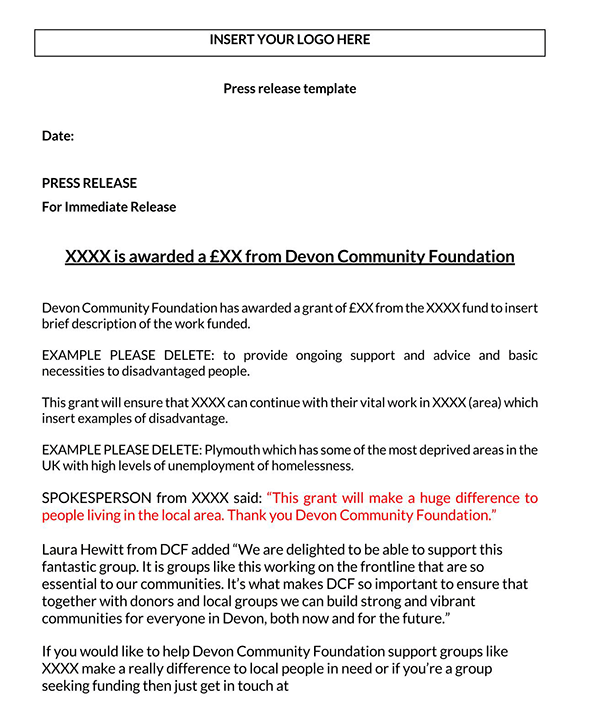
How to Make it Effective
Format of Template
To effectively communicate and intrigue a media house or journalist, imbibe the following format in the template:
Date
The “release on” date places a definite embargo on the release of the information, as the company desires, or for immediate release. It is written completely in capital letters at the top-right side of the template.
Title and italicized subheading
The title is a brief summary of the news in a maximum of 6-words and is used to pique the interest of the journalist. Below the title is an italicized subheading called a “dek” or “deck”, which details more information about the headline.
Opening line
The opening line of the template (a “lede”) is a summary of the news that answers the “5-W’s” questions: who, what, where, when, and why. It should be a detailed summary sentence that attracts readers to the story of not more than 20 words. Next, determine what makes the announcement interesting and important to the target audience and make journalists report it.
Spacing
The spacing in the template is important for readers to read easily and understand crucial facts quickly. The writer should use a single or 1.5 line spacing with double spacing between paragraphs – each paragraph should represent different sections of the release.
Body paragraphs
There are two types of body paragraphs – the first body paragraph and the remaining body paragraph. Each paragraph should not surpass 2 to 4 sentences. Therefore, keep them detailed and brief.
The first body paragraph contains major details of the news of the company and should include facts about the 5 Ws – who, what, where, when and why. Furthermore, it should contain few attractive quotes that the journalist could use in their publication of the story, attract media attention and highlight the content of the release.
The remaining body paragraphs build on the content of the first body paragraph, title, and subheading and offer essential background information about the company or news story.
Bulleted facts or figures
Important facts or statistics (company or product’s achievements) should be bulleted for the readers to note easily. Figures in a template are a great visualization tool that attracts the target audience’s attention and presents the company as a force in their field.
Boilerplate
The boilerplate is the last paragraph of the release, which summarizes the company (“who”) and its activities (“what”). It is short, truthful “about us” information on the company that is used in all the releases.
A “###” at the end
A number/pound sign “###” is the end notation and it is centered at the foot of the release. It signals the end of the communiqué and ensures that unintended extra words or characters are not mistakenly included in the publication.
Here are a few templates to get the understanding of the format:
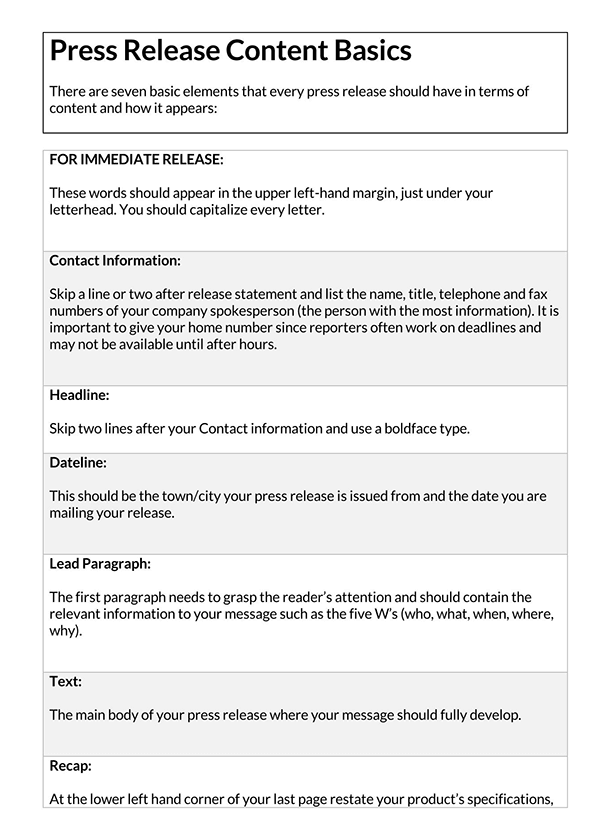
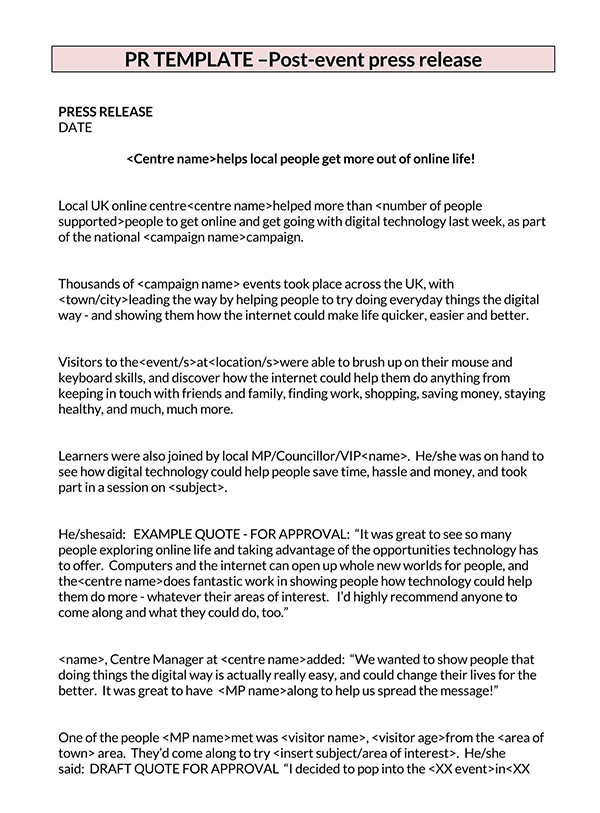
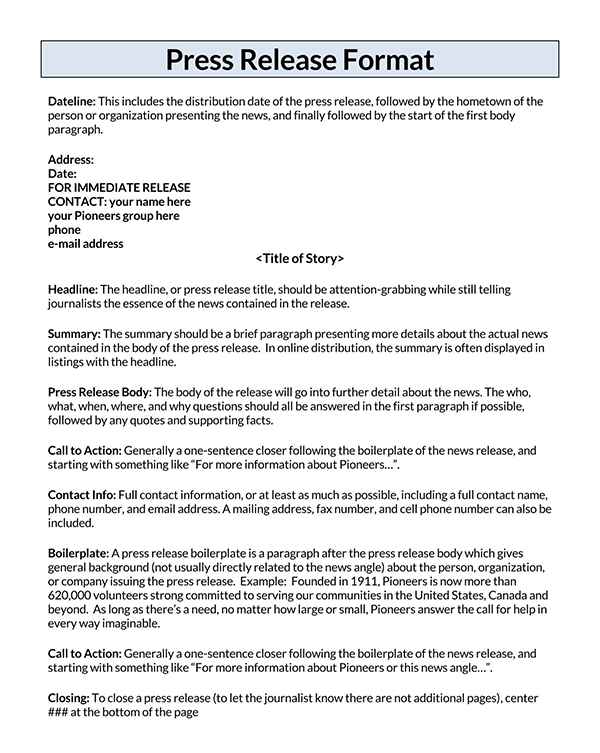
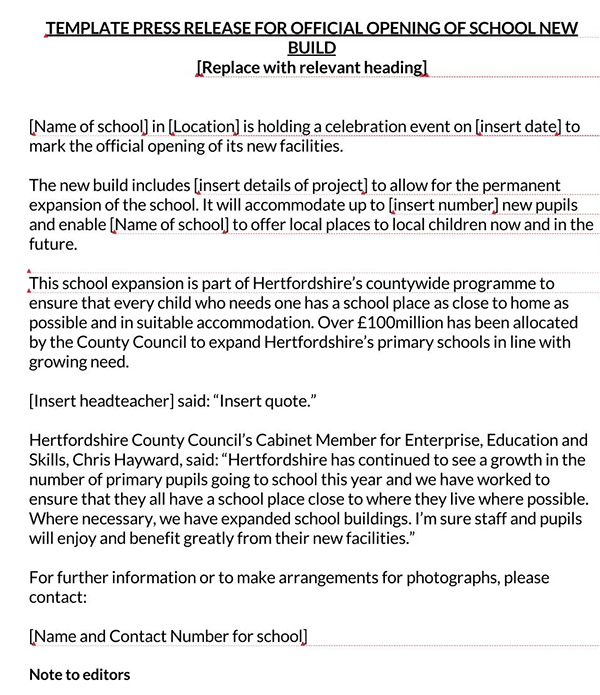
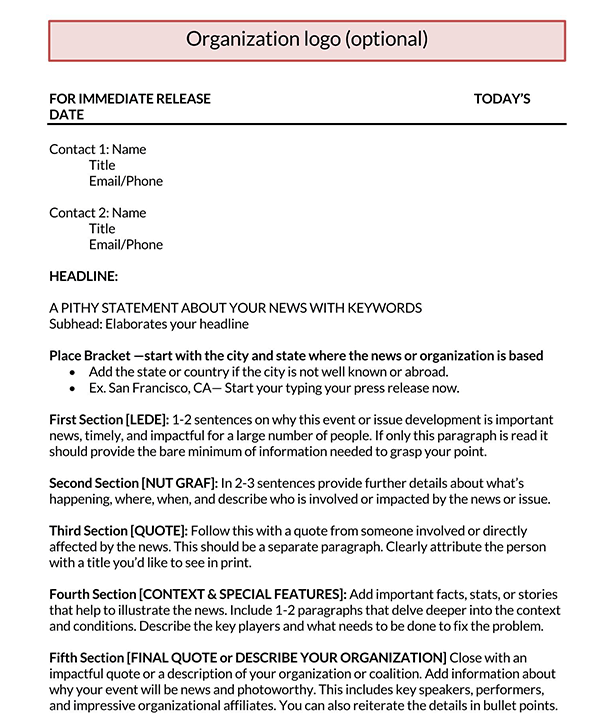
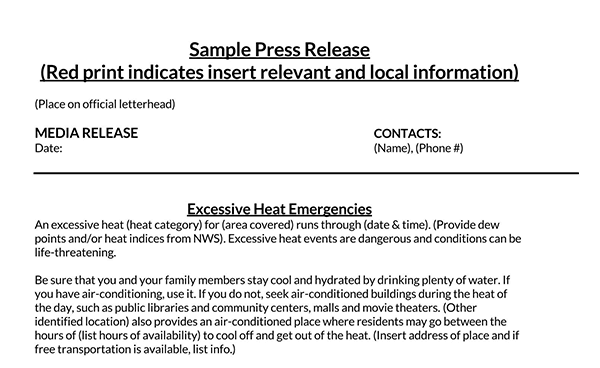
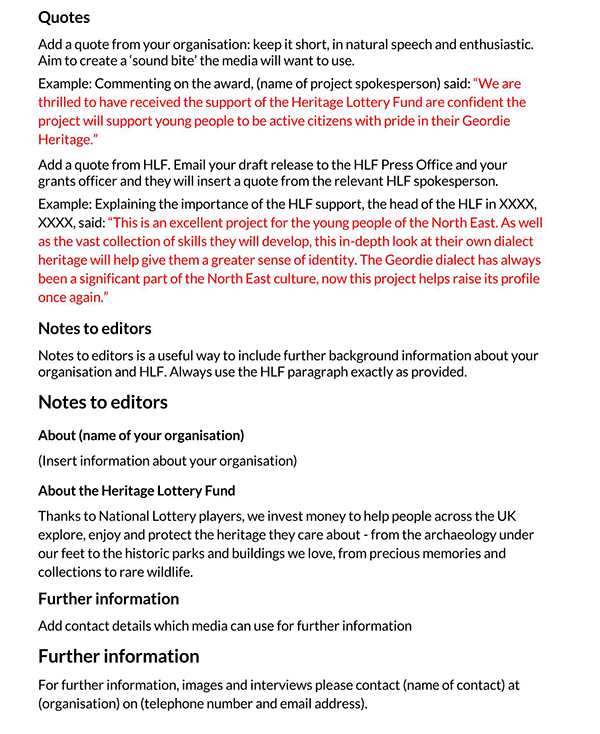
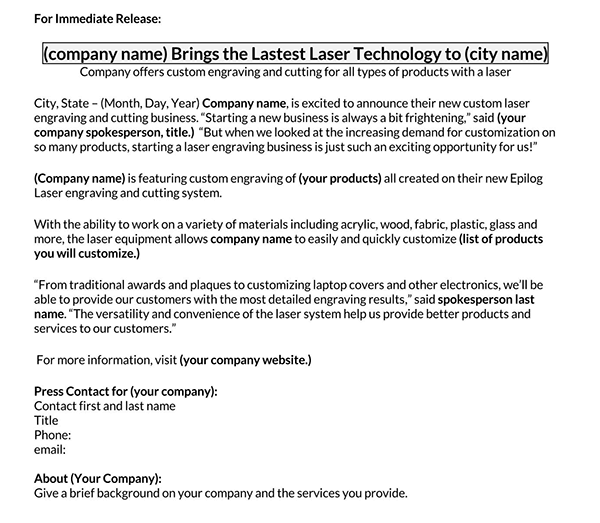
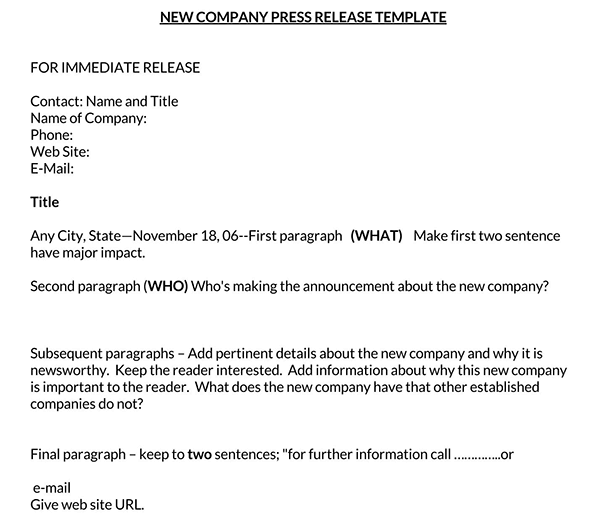
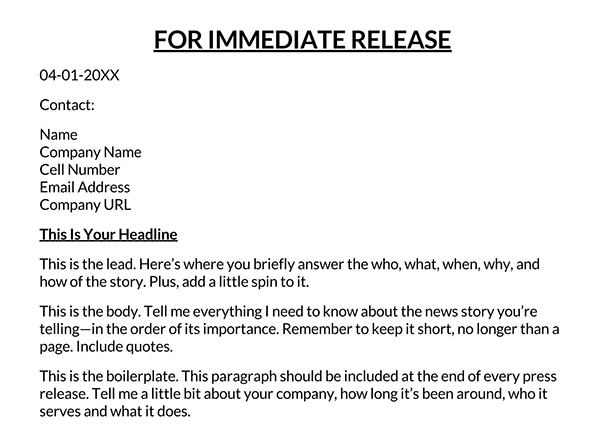
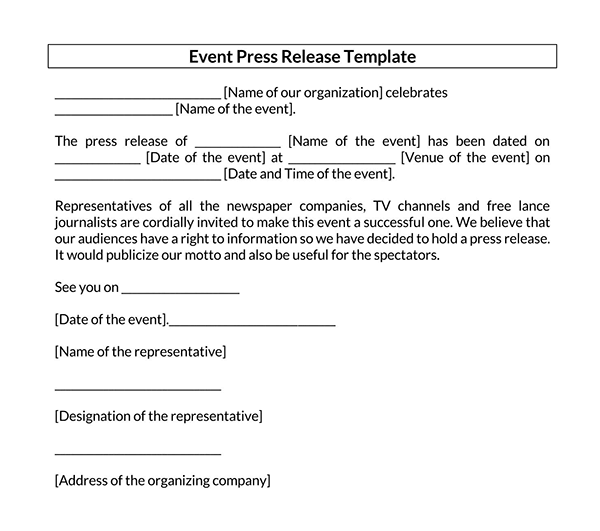
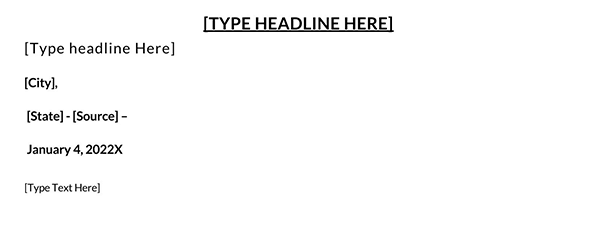
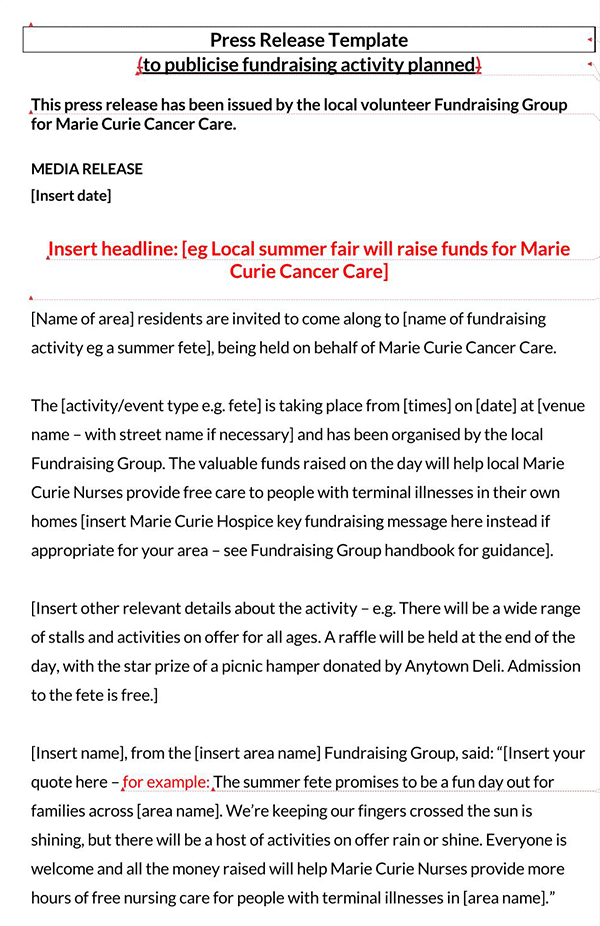
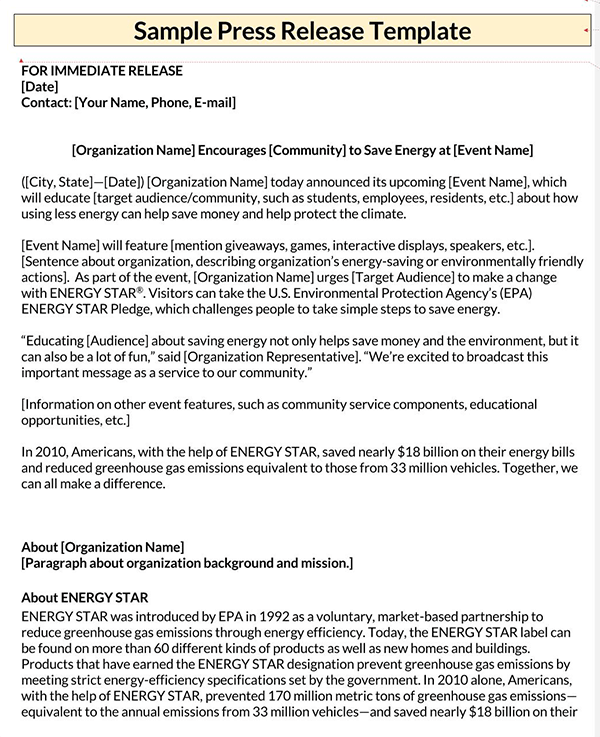
How to Write a Great Press Release
To produce a captivating release, follow these steps:
Add company logo
The company logo is the foremost detail included in the release – it is placed at the top center of the document. For releases distributed by emails, it is vital to include a high-resolution PNG image link of the company’s logo.
Provide contact information and “or Immediate Release”
It is important to have the particulars of the contact person in the company. This will allow interested people to contact the company for more information. Place the contact details to the right of the document immediately under the company’s logo.
The “immediate release” is a directive to the journalists to release the news immediately. It goes under the company’s logo on the left margin of the document.
Include the date
The date places an embargo on the release of the information sheet and directs the journalists as to the date and time to publish the news. It stays under the company’s logo on the left margin of the document.
EXAMPLE
“FOR RELEASE ON September 16, 2021, AT 16:00”.
Create a headline
Think up possible headlines for the story, maybe 10 – the best headline does not come immediately, and settle on the best that will enchant the audience. Include headlines with numbers and other exciting elements because they perform better during circulation and help readers visualize the article.
Include the deck
The deck is the italicized sub-header under the headline. It expounds a bit on the headline without repeating it. Add in keywords to make it come up during related searches and increase reportage.
Write the dateline
The dateline shows the location and date of publication. It records the name of the city in capitals, an abbreviation of the state and the date, separated from the beginning of the first body paragraph with an en dash
EXAMPLE
NEW YORK, NY, February 18, 2011 — [First body paragraph]
Set up a perspective
Align the headline to related news prevalent at the time of publication. It gives the story more traction and makes it relatable. News angles on progress, conflict, local impact, and drama might fetch a front-page spot.
Start putting information
You can start putting information in the body.
First paragraph
The first paragraph answers the 5-W questions to provide a summary of its principal idea. It clarifies the purpose and data and conveys its newsworthiness to the press.
Remainder of body
The paragraphs that make up the remainder of the body give significant secondary and additional facts. They build on the first paragraph and headline and include quotes, multimedia, links, and statistics.
Summarize the key elements
Utilize the five Ws to summarize the key elements of the release. Answer the five questions of “who”, “what”, “when”, “where,” and “why” to summarize it, to quickly enlighten readers who cannot read the whole publication.
Add press contact details
The press contact details appear at either the beginning of the document (under the headline and aligned to the left) or at the bottom. In addition, it lists the contact person’s data for the press to follow up.
EXAMPLE
Contact: David Mark
Phone: (000) 345-6789
Email: davidmark@movers.com
Add boilerplate
The boilerplate is the company’s calling card in the last paragraph section of the release. It details information about the company and its achievements. A good boilerplate on a digital release will link to the company’s webpage.
Include end notation
Center the end notation at the bottom of the document but before the final note. The end notation signals the end of the communication irrespective of its pages. The end notation at the bottom of the last page bears the “###” symbol.
Add final note and CTA
Final notes and CTA (Call to Action), at its bottom, give readers a directive to further interact with the company. Add the CTA with the contact details of the company’s representative.
EXAMPLE
“For more information, please visit our IG page @movers.com”.
Add ### or another signifier
Add ### or other signifiers (-END- or -30-) to the central end of the correspondence to indicate its end. A 2-paged release will have the word “more” centered at the foot of the first page and “###” at the end of the second page.
Offer multimedia resources
Embedded multimedia resources such as visual and interactive content enthrall readers and generate coverage. Journalists readily publish such stories for this reason. Include multimedia like a short video presentation or a picture.
The tips mentioned below help to create an attractive and effective release:
Time your release
The timing plays an important role in the amount of exposure it gets. Send stories out early in the week for good media traction. Target Tuesdays for the best attention from editors and avoid the rush on Mondays. Sending stories out on Fridays almost guarantees poor or no visibility.
Reach out to the right journalists
Be intentional about the distribution of the release. Companies should connect and build relationships with specific journalists that have experience covering their fields. This can be facilitated by establishing a database of journalists and editors through paid services or networking options.
Pitch directly to editors
Companies should consider making it exclusive to editors, especially when the release fits perfectly into the nature of their publication. However, before companies commit to this, they should be certain that their target audience and intended coverage is one and the same with the publication’s readership and coverage area.
Use a wire service
Use wire services to ensure the fastest distribution rate and a wider reach. That way, a lot of media outlets can pick it up easily. In addition, wire services add credibility to the releases and make them come off as more official.
Share the media coverage
Ensure you have a media section on your company website. It boosts your brand’s SEO, and helps other journalists to discover your company. After it has been picked up and published by an editor, share the resulting news article on your media page and on social media, and encourage your audience to comment and share.
Give attention to formatting
Stick to proper formatting like length (maximum of 400 – 500 words or 2 pages), avoid the use of personal pronouns (I, we, or you), the header should be in bold with sub-header in italics, use single line spacing (or 1.5 line spacing) and maintain professional fonts (Times New Roman, Arial or Calibri).
Grammar and spelling
The press release is vital to a company’s brand identity; therefore, it should be free of grammar and spelling errors. Journalists will discard one littered with errors, while readers will lose confidence in the company or their product. It portrays the company as unprofessional and changes the intended information.
Include a quote from the company
Include a quote from the company to reduce the work of a busy reporter and to increase the chances of having the story reported and featured. A quote helps to bring the details to life, and reporters find it useful in creating context around the announcement. Use the chosen quote to shape the narrative and to place emphasis on the core of the publication.
Be concise
Writing a release requires the best copywriting skills. This entails succinctly stating intentions in a direct manner and eliminating irrelevancies. Limit the word count to 500 words, and ensure you do not fail to emphasize the important part for your readers.
Proofread
A press release is like a public representation of your company that influences people’s opinion about the brand. Mistake-strewn ones harm the brand and might communicate wrong messages. Go through the release to catch mistakes before distribution.
Make your headline irresistible
Just like emails and subject lines, its headline sets it up for success or failure. Think of a newsworthy angle and use it to create an interesting headline. Keep the headline brief. Use simple, clear and understandable sentences with action verbs.
Convey the news value to the press
You have to give journalists a reason upfront why they should care enough to share the release. Use the inverted pyramid formula to share the most important information first. Journalists can easily determine newsworthiness when all germane facts are stated clearly in the first paragraph. To ensure your readers do not miss them, make sure all important information is included in this section.
Don’t be afraid to go offline
There are offline alternatives – snail mail, courier services and personal deliveries – to send a release and get a journalist’s attention. Emails inundate media houses and some get missed. Offline alternatives increase the chances of getting a journalist directly.
Avoid publishing on the decided hour
Most companies set the distribution on the hour (12 p.m. or 6 p.m.) when they use a distribution service. Refrain from this practice because the article might get lost in the traffic; rather use a distinct time like 12:43 p.m.
Write visual or interactive content
Include interactive (social media handles, links, hashtags, or videos) and visual (infographics) embedded content that will make readers consume more company information. Interactive elements push journalists and readers to complete an action like clicking a link, watching a video, etc., and this affords your brand more ways to track your audience preferences and actions.
Create an exploratory journey
Uniqueness is a prominent feature of good reporting. Information that is available to other journalists is not of much value to a journalist. As such, it provides ample information for journalists to offer unique and exciting stories that will connect with their readers.
Choose the right distribution service
All distribution services have their own unique formatting style. Make sure you pick a distribution service with formatting requirements that align with your company’s needs. In addition, before submitting it, double-check the formatting to be sure it meets the standards of your chosen distribution service.
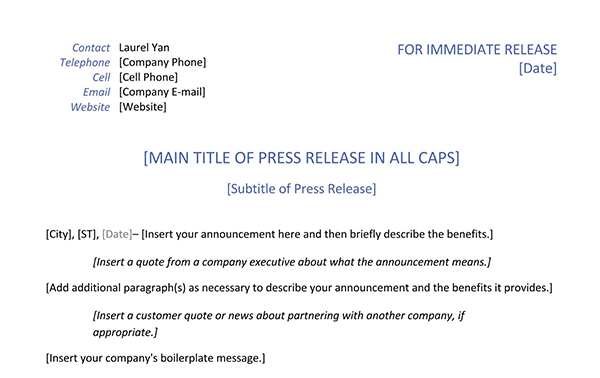
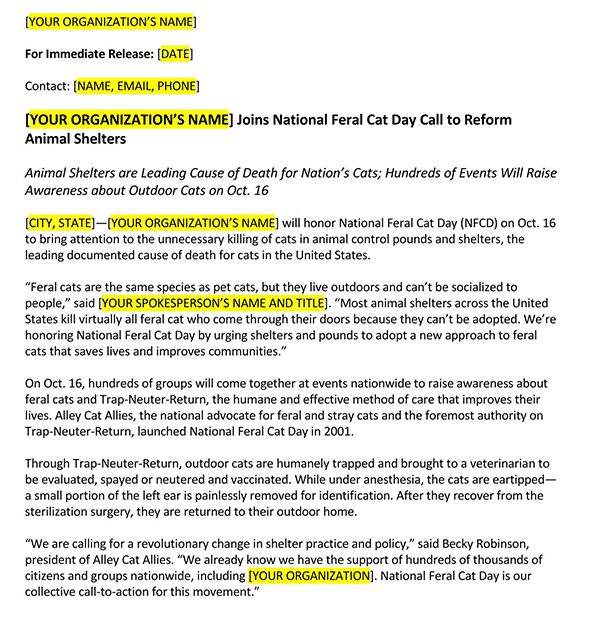
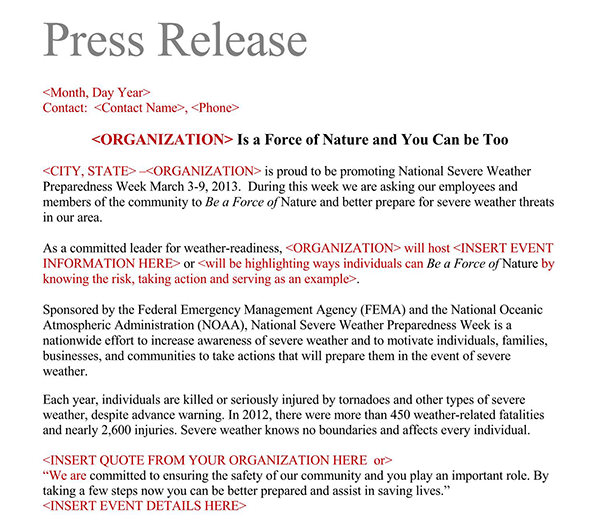
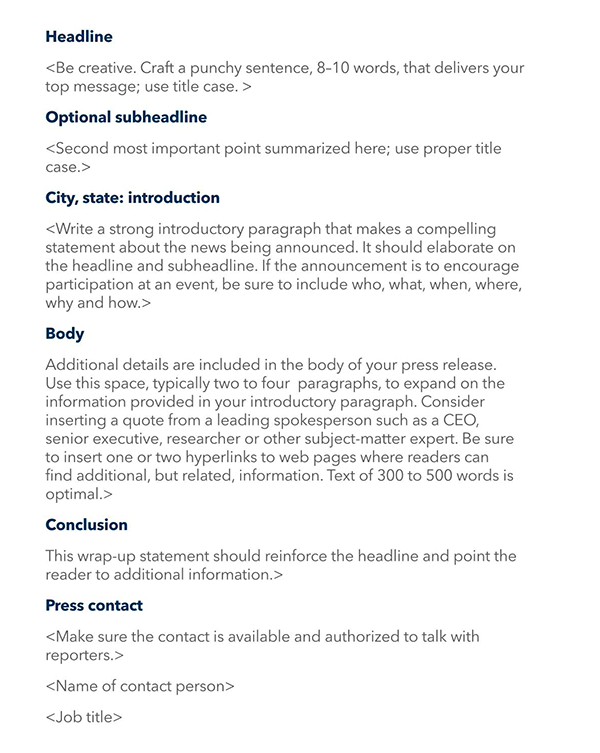
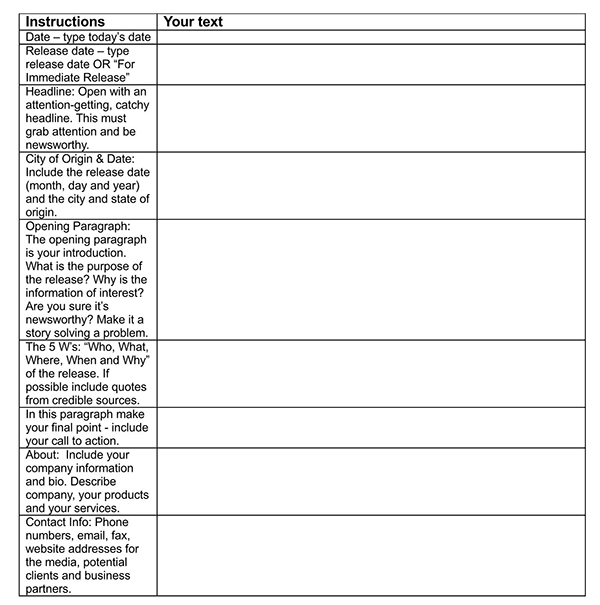
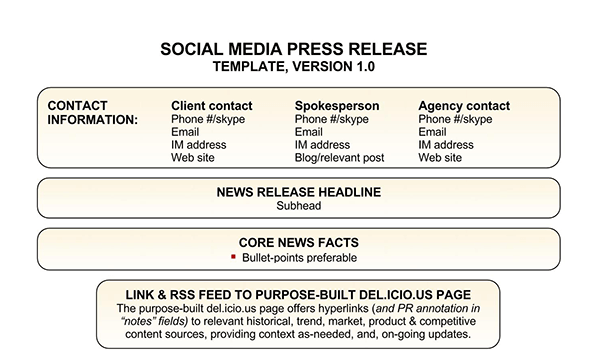
Frequently Asked Questions
Send a press release directly to journalists and media houses if a database exists. In its absence, use a distribution service to reach a wider audience swiftly and effortlessly.
An AP style release follows the Associated Press guidelines used by journalists. This makes the use of a press release in this style smooth for journalists. Our free downloadable templates adhere to this standard.
A newsworthy release that captivates the reader and circulates to a large target audience is a good release.




